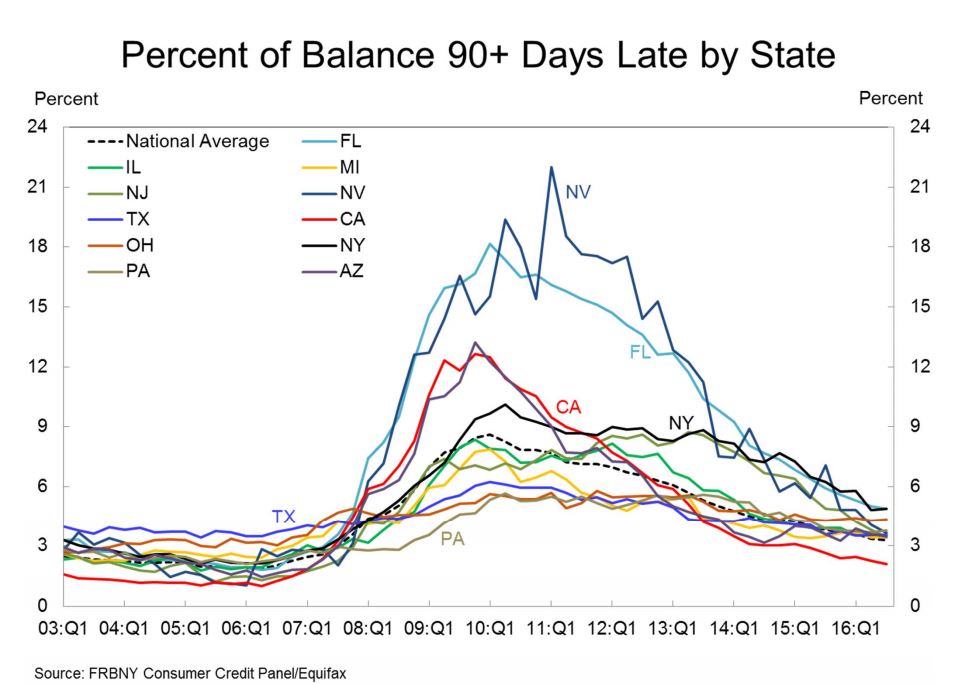 According to the latest Quarterly Report on Household Debt and Credit from the Federal Reserve Bank of New York, the total mortgage debt increased annually by $90 billion dollars to a total of $8.35 trillion dollars in Q3. Compared quarter to quarter, mortgage debt decreased by $12 billion from Q2 to the third quarter.
According to the latest Quarterly Report on Household Debt and Credit from the Federal Reserve Bank of New York, the total mortgage debt increased annually by $90 billion dollars to a total of $8.35 trillion dollars in Q3. Compared quarter to quarter, mortgage debt decreased by $12 billion from Q2 to the third quarter.
Of this mortgage debt, the New York Fed found that the percentage of seriously delinquent mortgage debt fell from 1.8 percent in Q2 to 1.6 percent in the third quarter. The report adds that while the overall delinquency rate for household debts (including mortgage debt) worsened in Q3, the rate of bankruptcy continued to improve. Further, the New York Fed adds that new foreclosure notations hit a new low for the history of the report.
“This quarter, mortgage balance growth remained low in part due to tight lending standards, while non-housing debt continued its steady rise seen since the financial crisis,” said Andrew Haughwout, SVP at the New York Fed. “Subprime and overall auto loan originations remained strong and auto loan delinquency rates were low and relatively flat. Yet disaggregating results by credit score revealed significantly higher, and rising, delinquency rates among subprime auto loans.”
The New York fed also found that delinquency transition rates for current mortgage accounts have a rate of 1.2 percent of current balances transitioning to delinquency. This was an increase from 0.9 percent in Q1. Additionally, the report indicated that 15.1 percent of mortgages in early delinquency transitioned to 90+ days delinquent, compared to 32.7 percent of these loans that became current.
Broken down on a micro-level, the New York Fed reported on the percent of mortgage debt in serious delinquency in 11 states which included Illinois, New Jersey, Texas, Ohio, Pennsylvania, Florida, Michigan, Nevada, California, New York, and Arizona. Four of these states had a percentage rate that feel below the 1.6 percent national average (Arizona, Texas, Michigan, and California), while the other seven hit rates above the national average. New York held the highest percent rate in Q3 followed by Florida and New Jersey.
To read the full report, click HERE.


 DSNews The homepage of the servicing industry
DSNews The homepage of the servicing industry









